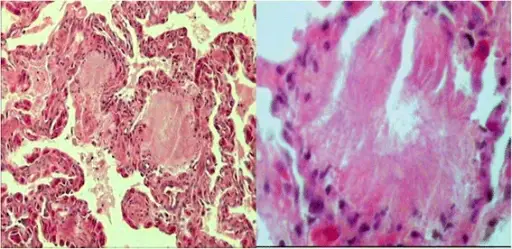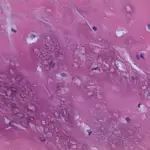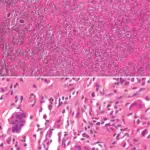Gout is a common form of inflammatory arthritis that is very painful.
What is the Pathology of Gout?
The pathology of gout is:
-Etiology: Gout is caused by accumulation of uric acid.
-Genes involved: None.
-Pathogenesis: Uric acid crystals (monosodium urate) build up in joints.
-Histology: The histology associated with gout shows urate crystals and histiocytes.
How does Gout Present?
Patients with gout typically present in older males or females with old age. Symptoms typically include sudden painful monoarthritis.
How is Gout Diagnosed?
Gout is diagnosed by assessing the symptoms and the results of the physical examination, X-rays, and lab tests.
How is Gout Treated?
Gout is treated and managed with medical treatment and self-management strategies. Treatment options include nonsteroidal anti-inflammatory drugs (NSAIDs) like ibuprofen, steroids, anti-inflammatory drug colchicine, allopurinol, febuxostat, and pegloticase.
What is the Prognosis of Gout?
The prognosis of gout is fair when managed properly.



